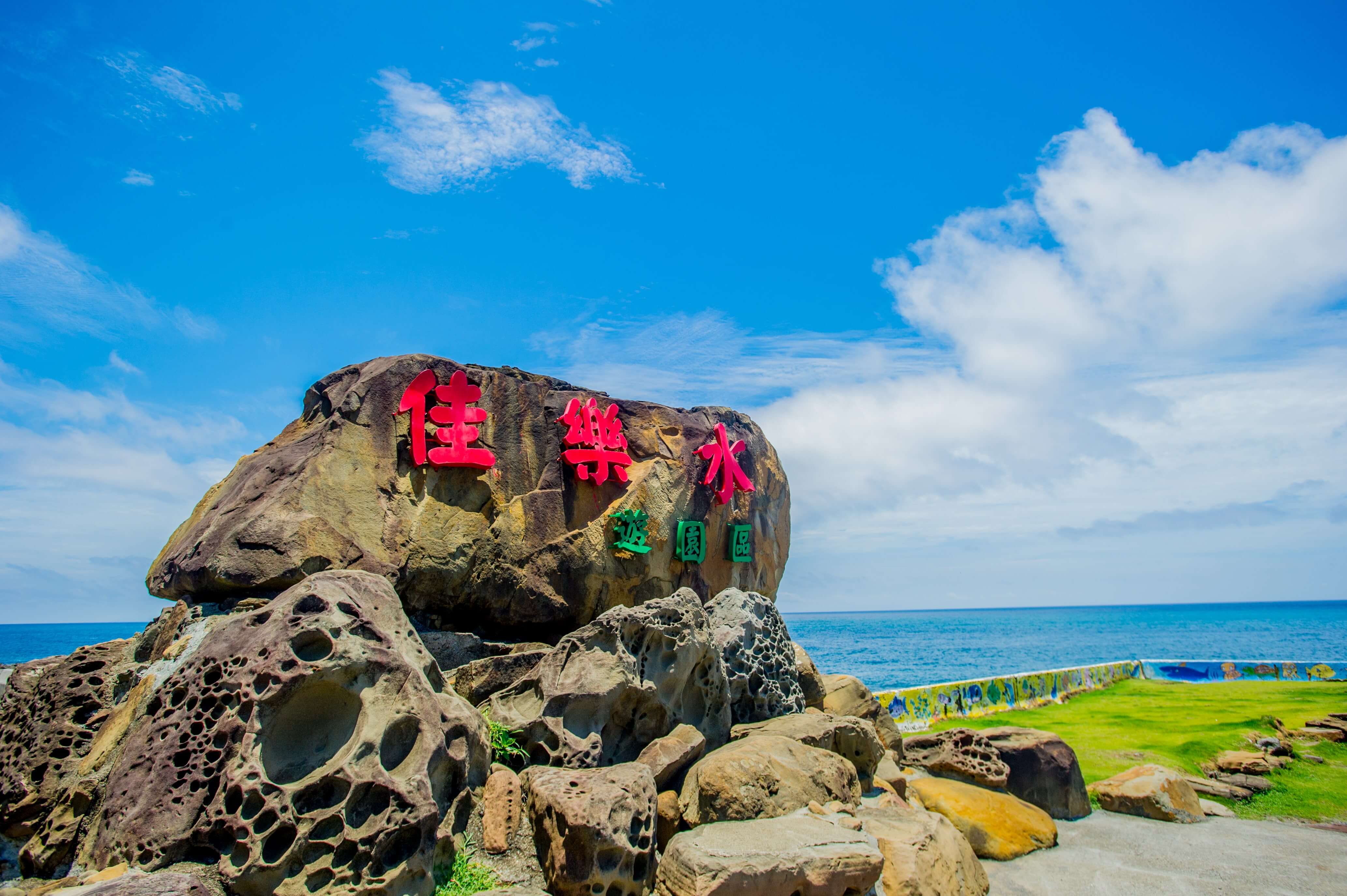Hai Shen Paradise Jialeshuei Introduction
After leaving Gangkou Village, continue along Provincial Highway 26 until the end. Along the way, you can see numerous coral reef coasts and strange rocks, arriving at "Kailuo Water," originally named "Jialuo Water," which derives its Taiwanese pronunciation meaning "water falling from a high place." At the end of the trails in the Kailuo Water Scenic Area, there is a waterfall called "Shanhai Waterfall," and later it was renamed to take on the meanings of "Anhe Le Li.” Although Kailuo Water Scenic Area is not within Kenting National Park, it features a stunning variety of geological landscapes with peculiar rocks, hence it is known as the "Sea God Paradise." The natural landscapes here originate from deep-sea sedimentary rock layers, clearly defined, making it a natural geography classroom. Additionally, there are remarkable rocks formed by erosion from seawater, which are quite eye-catching, worthy of slowing down and observing carefully along the scenic trail. The geological landscapes of Kailuo Water Scenic Area can be categorized into three main types: "Deep-Sea Rock Layers," "Sandstone Layers," and "Rocky Coast." The scenic trail features two pavilions for resting and enjoying the view. Apart from the Shanhai Waterfall, most geological landscapes can be seen in the early parts of the trail, with a visit taking around 2.5 to 3 hours. Kailuo Water is primarily composed of rock layers deposited millions of years ago in the deep sea. Later, due to plate tectonics, these layers surfaced and were shaped into varied geological features by seawater erosion: - Deep-Sea Rock Layers: Kailuo Water is the only place on the Hengchun Peninsula with a "rocky coast," with these layers originating from sedimentary rock on the continental slope of the deep sea. Therefore, you'll find "flame-like and slump structures" in the Kailuo Water Scenic Area. - Sedimentary Rock Layers: Around 10 million years ago, at the bottom of the deep sea, ocean currents brought a large amount of sand particles, forming layers of sand. As the sand layers and mud layers repeatedly overlapped and accumulated horizontally, the sand layers formed "sandstone layers," and the mud layers formed "shale layers." After hundreds of thousands of years, tectonic movements pushed and tilted these layers, resulting in "flame-like and slump structures," "ripple marks," "trace fossils," and other sedimentary structures. - Erosion Landforms: Once the rock layers emerged above sea level, they were gradually eroded by seawater and biological activity, resulting in various formations, such as "kerf," "stained patterns," "burrows of boring clams," and "weathering windows." Stained Patterns: As you walk over the rock surfaces, you'll notice many red or reddish-brown striped patterns on the rocks, stunning to behold. This is mainly because the sandstone layers contain numerous joints and cracks, allowing iron-rich groundwater to flow through. After weathering in the air, iron oxide is produced, which is red and fills the cracks, forming stained patterns. Weathering Windows: On the rocky coast, you will see many small openings scattered across entire rock layers. These marine erosion landforms are called "weathering windows," because their shape resembles a honeycomb, also known as "honeycomb rock." They originally were small holes in the rocks, which transformed into "weathering windows" after being eroded and weathered by seawater and sea breezes. Slump Structures: Slump structures are also geological landscapes caused by rock layer deformation. They mainly result from underwater landslides causing the sandstone layers to twist, producing geological formations. Shanhai Waterfall: At the end of the trail, you will encounter the final sight, "Shanhai Waterfall," the only waterfall in the Kenting area. Water flows down directly to the sea, creating a magnificent spectacle. The waterfall's water comes from a stream at the cliff top; when the water falls from above, it truly becomes "Jialuo Water." During the rainy season, the abundant water creates a powerful cascade as it spills into the sea. In the dry season, it flows like a gentle stream, so the breathtaking scenery of Shanhai Waterfall is truly a sight not to be missed!
 Jialeshuei Scenic Area Trail
Jialeshuei Scenic Area Trail
 Coral reef and sandstone coast
Coral reef and sandstone coast




































